 |
| Candles of Horse Chestnut Flowers - 11 May 2017 Few of these flowers will bear fruit due to the ravages of the leaf miner moth |
The horse chestnut is of course a foreigner, first introduced from the Balkans in the seventeenth century. Unsurprisingly, it quickly found favour with the landscape gardeners of the time. For instance, Christopher Wren redesigned Bushy Park specially to incorporate an avenue of these trees stretching from Teddington to Hampton Court. An avenue that Queen Victoria made an annual pilgrimage to visit and admire. Others were equally enamoured, including Capability Brown who planted 4800 chestnut trees in one estate in Tottenham alone.
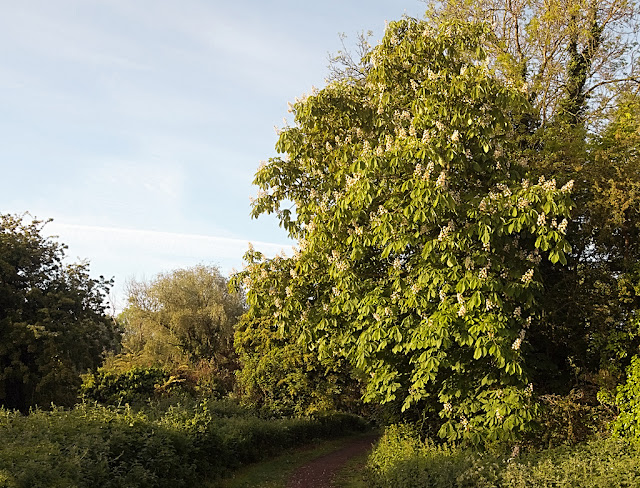 |
| Mature Tree - 21 May 2017 A mature tree in full bloom is an impressive site This tree by the Old School Lane entrance look very different in August |
The brash floral display of this newcomer total eclipses the far more subdued (O So British) flowers of the native trees like oak, ash, poplar and birch. But they are wind pollinated as every hay fever sufferer knows. They do not need to advertise themselves, and can have discrete brown or green catkins, reliant on nothing but the wind for the essential pollination.
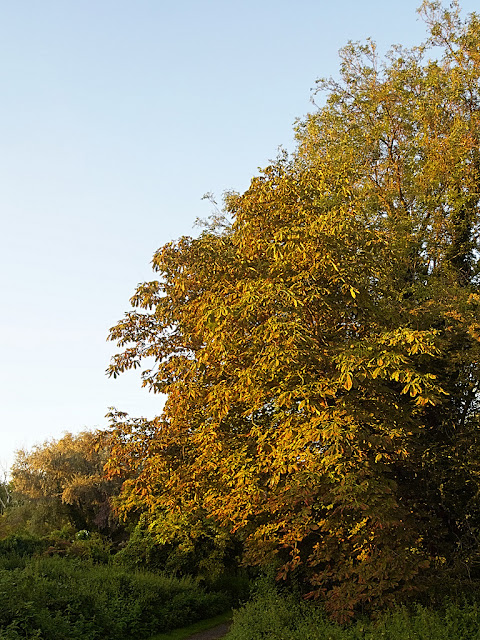 |
| Cankered Tree - 13 August 2017 The same tree as shown in the previous photograph showing the effects of the moth. |
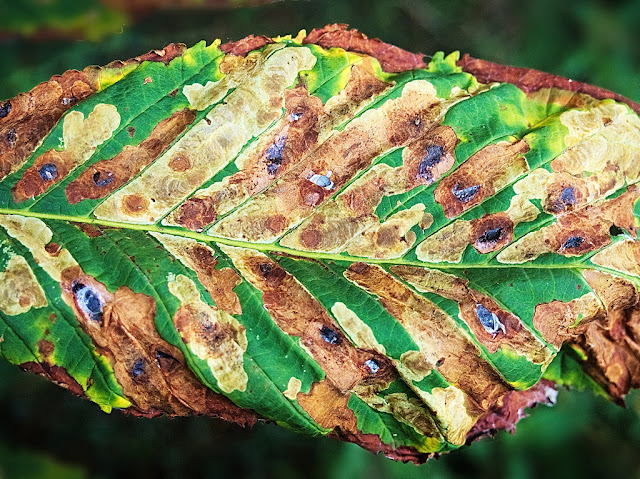 |
| Cankered Leaf - 11 August 2017 Leaf damage and black holes where the moth has hatched |
The affects of the canker are well illustrated by a comparison of two horse chestnut trees in Milton Country Park. By August, the large tree by the entrance shown in the photograph above has a lot of damage. On the lower branches at least, I could only find one solitary conker. In contrast, on one of the trees planted in the last couple of years which shows very little leaf miner damage, there are any number of clumps of fruit with four or five conkers in each group.
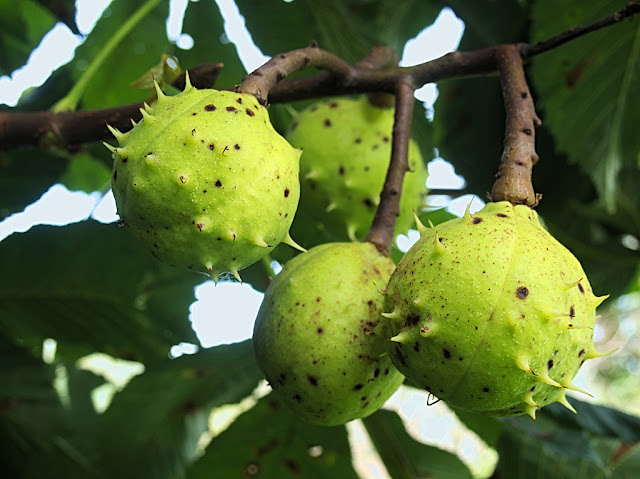 |
| Fruit on a Healthy Tree - 11 August 2017 One of many groups of conkers on a healthy tree |
Finally, in September, the fruit is ripe and falls to the ground to be collected as ammo for endless games of conkers.
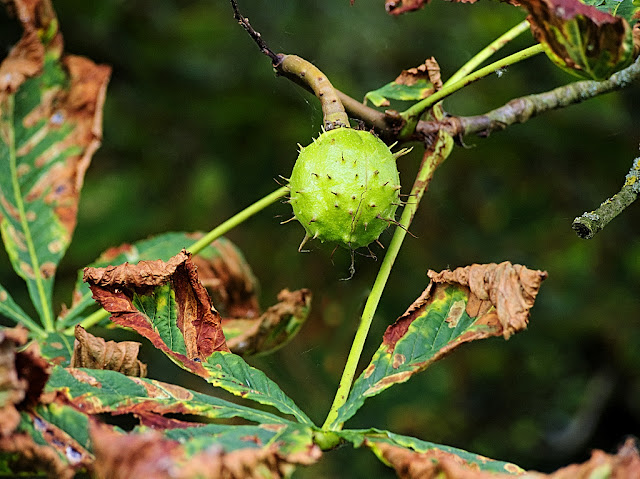 |
| Single Fruit on Damaged Tree - 11 August 2017 This was the only conker I could see on the lower branches of the large tree featured above |
And That Old Chestnut
One thing did puzzle me: where did the saying 'that old chestnut' come from? It apparently comes from an 1816 play by William Diamond. One of the players endlessly repeats a joke about a cork tree with only minor variations. His listener, bored with the 28th repetition, interrupts with the line "A Chestnut. I have heard you tell the joke 27 times and I'm sure it was a Chestnut!". The actor, William Warren, who played the listener later quoted the line at a dinner party when another guest started telling an old joke. From there, the phrase 'that old chestnut' passed into the language.Further Reading
UK Moths : Horse Chestnut Leaf-miner Cameraria ohridellaThe Phrase Finder: That Old Chestnut
Forestry Commission: Horse chestnut leaf miner - (Cameraria ohridella)
Country Living: Fact File: The Horse Chestnut Tree
UK Safari : Horse Chestnut Trees
Google Books: The Long Long Life of Trees
Daily Telegraph: Conkers Could Vanish Within 15 Years
Next: Small and Beautiful
